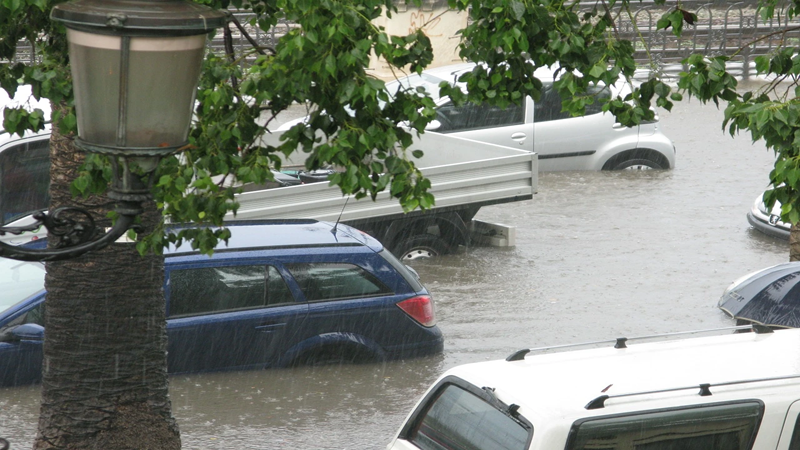
Tabatha Ferrari
How should governments act to deal with the threat of flooding? The Italian example.
Most Read Stories Today
-
Water Scarcity and Artificial Rainfall: The Positive and The Negative Effects of Cloud Seeding, including Health Hazards and Climate Implications.
-
Renewable Energy in Rural Areas: Challenges, Opportunities, and Successful Rural Projects
-
Pakistan's Agriculture at Risk Due to Climate Variability
-
South Africa's Recent Floods: Is Climate Change to Blame?
-
South Korea's floods: root causes and prevention strategies.
-
South Africa: Cape Town, A City Under Fire
-
The Human Cost of Climate Disasters
-
Our Oceans, Our Future: The South African Dilemma of Overfishing
-
Degenerative Impact of Hydrocarbons On The Environment.
-
Sustainable Urban Planning - Copenhagen and the Path to Climate Resilience
The recent floods that devastated Emilia-Romagna and other Italian regions have made it even clearer how necessary it is today to know how to deal with the consequences of climate change, both through short-term and long-term actions.
Global warming is bringing devastating effects, including droughts and floods, leading to an increase in the frequency of extreme precipitation. Furthermore, the thickness of Alpine glaciers in Italy has shrunk by up to 25 meters, equivalent to 50 billion cubic meters of ice.
Already, one-fifth of Italy’s population lives in potentially flood-prone areas. It is therefore extremely urgent to act immediately, otherwise the consequences for the safety of the population will be even greater.
For a country like Italy, which is an area particularly vulnerable to climate risks, it is essential to implement adaptation policies like:
- Reduce CO2 emissions by 58% by 2030 to achieve climate neutrality in 2045. This is possible, for instance, by giving priority to renewable sources. Since using electric cars is not enough, governments should promote initiatives aimed at preserving soils, forests, and oceans, as these are the most natural forms of carbon capture and storage. That is why last Wednesday the European Parliament voted in favour of the Nature Restoration Act aimed at restoring damaged ecosystems, both terrestrial and marine, which account for 80 percent in Europe. This initiative will be fundamental to minimizing biodiversity loss, as well as meeting the EU's climate goals. But it will also bring significant economic benefits so that every euro means at least 8 euros of profit.
- Implementing nature-based solutions to mitigate flooding, such as widening the riverbed and reinforcing the riverbanks. In this way, rivers can continue to expand without overflowing but also renew infrastructure to reduce water losses, which currently amount to 40 percent. In order to reduce the risk of flooding, green infrastructures should incorporate natural features into urban planning and architecture, such as building green roofs that capture and store rainwater or permeable pavements that help water to infiltrate into the soil.
- Improving early warning systems, that can detect and predict flooding through real-time monitoring of river levels and rainfall. Timely warnings can help prepare and respond effectively, as was tested in Italy a few weeks ago with the IT-Alert system, a public service aimed at minimizing risk during a major emergency or an impending catastrophic event. This is achieved through the immediate dissemination of messages to our devices in the affected area and timely provision of information to potentially affected individuals.
- Raising public awareness through campaigns and education about the risks associated with floods is of major importance, including the preparatory measures, such as securing their properties to minimize the risk and developing evacuation plans.
- Improving coordination and international cooperation, which will help governments invest in climate research, share their knowledge and management techniques. Coordination among nations will facilitate the mobilization of resources and assistance, especially during flood emergencies, such as humanitarian aid. This can lead to harmonization of flood control strategies and policy coordination. Consequently, flood control efforts are more successful, and fragmentation is reduced.
Conclusion
Ultimately, global cooperation offers an organizational structure in which resources, capabilities, and data can be combined. Actions such as environmental restoration, climate change adaptation, and investments in climate research and infrastructure are critical factors for more effective flood management and long-term resilience.
Here’s what governments should do to ensure our future is safe from the dangers of flooding.
Dealing with climate change is of utmost importance as it poses a significant threat to the planet and humanity, but governments must take immediate action to mitigate climate change for the benefit of future generations.

Terms & Conditions
Subscribe
Report
My comments